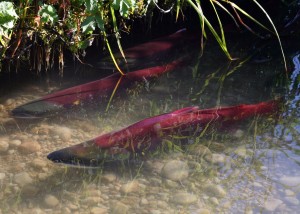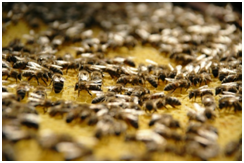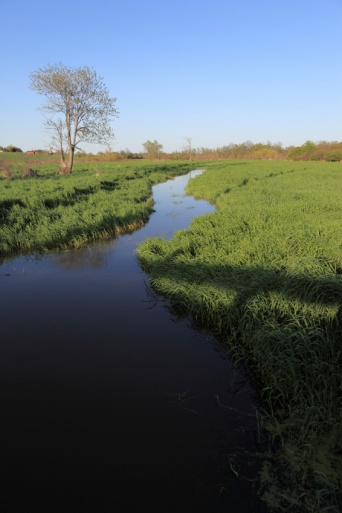01
Dec
EPA Sued to Enforce Endangered Salmon Protections
(Beyond Pesticides, December 1, 2010) Several fishing and environmental conservation groups are suing the U.S. Environmental Protection Agency (EPA) for failing to limit the use of six agricultural pesticides to protect salmon. Restrictions on the use of six pesticides in Oregon, Washington and California shown to harm endangered salmon and steelhead, were ordered after a court found that EPA violated the Endangered Species Act (ESA) by failing to restrict the pesticides from entering salmon habitat. However EPA has failed to act to restrict the pesticides.
The lawsuit, filed in U.S. District Court in Washington is the fourth lawsuit the plainstiffs -Northwest Coalition for Alternatives to Pesticides, Pacific Coast Federation of Fishermen’s Associations; Institute for Fisheries Resources and Defenders of Wildlife- brought against the EPA to restrict the pesticides diazinon, malathion, chlorpyrifos, carbaryl, carbofuran and methomyl in streams of endangered salmon and steelhead. The plaintiffs seek a judgment declaring that EPA’s failure to implement the organophosphate (OP) and carbamate biological opinions issued by the National Marine Fisheries Service (NMFS) violates the ESA, and a judgment declaring that EPA is taking listed salmonids in violation of the ESA. The lawsuit seeks an order vacating and enjoining EPA’s authorization of the uses of diazinon, malathion, chlorpyrifos, carbaryl, carbofuran, and methomyl that do not comply with the recommended mitigation measures until such time as EPA has put in place permanent measures that ensure against likely jeopardy to listed salmon and steelhead or adverse modification of their critical habitat, and an order compelling EPA to put in place such permanent measures within one year.
According to the suit, to date EPA has not implemented a single one of NMFS’s recommendations, nor has EPA taken steps to implement any alternative protective measures that would avoid jeopardy and adverse modification in response to the biological opinions. EPA asked manufacturers to adopt the restrictions voluntarily, the suit says, but the manufacturers refused and EPA has not followed through with new requirements.
NMFS issued three Biological Opinions, the latest on August 2010, which called for several limitations on aerial spraying and ground application of the pesticides near salmon waters, as well as buffer zones around salmon waters and ditches that drain to salmon habitat, among others. EPA was court ordered to consult with NMFS to identify measures needed to protect salmon and steelhead from the pesticides as a result of a 2002 and 2007 lawsuit.
Under pressure, EPA announced plans to place additional limitations on the use of three organophosphate pesticides, chlorpyrifos, diazinon and malathion in 2009. EPA issued less stringent protections than those of the NMFS and stated that it will require industry to fund and carry out monitoring of salmon streams in order to assure the pesticide restrictions work as intended. In a May 14, 2010 letter to NMFS, EPA explained how the agency planned to achieve protection goals through the methods outlined by NMFS in the Biological Opinions or by alternative methods that EPA’s scientific analyses determined will achieve the same purpose. At the same time, in an act of defiance, Dow AgroSciences and Cheminova, manufacturers of the pesticides in question, stated in correspondence to the EPA dated May 7, 2010, that they were “baffled by the agency’s position,” saying that their products do not threaten endangered species. Citing their “solid scientific evidence,” that they claim is “far more complete than is reflected in the NMFS Biological Opinion,” they are not prepared to make the registration revisions [to their products] described in the EPA’s April 29, 2010 and November 2009 requests.
The pesticides that have been reviewed so far are some of the most dangerous chemicals used today. Chlorpyrifos, diazinon, malathion, carbaryl, carbofuran, and methomyl are neurotoxic and pose serious risks to both humans and wildlife. While many of these pesticides have been phased out for residential use, they continue to expose wildlife and farmworkers through their use in agriculture. Studies have shown that mixtures of organophosphate and carbamate pesticides cause more harm to endangered salmon than individual pesticide exposure and are commonly detected in freshwater habitats that support these threatened and endangered species.
The other pesticides reviewed by NMFS to date include: azinphos methyl, bensulide, dimethoate, disulfoton, ethoprop, fenamiphos, naled, methamidophos, methidathion, methyl parathion, phorate, and phosmet. Information on these pesticides can be found on the Pesticide Gateway.
Source: The Oregonian














